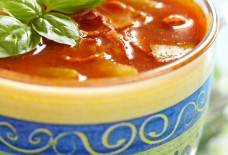Influential Contemporary Arab Artists Throughout History
By: Sara Tawfik/Arab America Contributing Writer
Many Arab artists have emerged on the scene of contemporary art movements throughout the 20th century, and continue to be inspirational. Within the contemporary art style, there has been a rapid increase of Arab and Middle Eastern influence in modern art. The market for art from the Middle East has been at a rapid incline since 2003, with Arab artists like Fahr El-Nissa Zeid, Mathaf, and Saloua Raouda Choucair at the frontlines of modern and contemporary movements. Art collectors actively look for pieces that define Arab culture. During the division of the post-war era, Arabs received independence for themselves. Hence, many Arab artists began reflecting on the Arab identity within the artwork. Therefore, many Arab artists created innovative ways of telling their stories. Unlike most western and European art styles where they only paint historical figures.
Mahmoud Said
Said is considered the founder of modern Egyptian art. He was the son of the former Egyptian Prime Minister Mohamed Saïd Pacha. Although Said’s social background hasn’t allowed him to pursue his passions of art, he remained an impact on the Arab modern art movement. Said had a unique and innovative style that examined the lifestyle and characteristics of the Egyptian people. His works portrayed the Egyptian people during the rise of nationalism in the 1920s. He paved a way for artists to examine national identity and made a way for Modern Egyptian Art. This dynamic art movement later paved the way for artistic expression within Iraq, Syria, and Lebanon.
I don’t want to paint a woman who looks European, I want to paint a picture that looks like my mother or my sister, I want to paint the street outside my window
Mahmoud Said on the European art style
Dia Azzawi
Azzawi is among the most influential Arab artists who focused on connecting his art culturally rather than stylistically. He took had a deep interest in Palestinian conflicts, and this influenced many of his pieces. He encouraged many Iraqi artists to create art in the book art style, also known as Dafater. Azzawi is known for his paintings, sculptures, tapestry, and printmaking work. Within his printmaking work, he authentically incorporated Arabic script. Dia Azzawi has been an inspiration to Arab artists through many different platforms and formed different communities. One example is New Vision, which highlighted his interest in calligraffiti. Many of his paintings, such as Homage to Baghdad, depict his love for his country.
Saliba Douaihy
Saliba Douaihy, inspired by the work of Western artists such as Mark Rothko and Hans Hoffman, left Lebanon for New York to learn about the approaches behind color. Douaihy uses color in his artwork purposely to describe the beauty of Lebanon. Once he’d spent enough time studying the Western abstract expressionists of his time, he formulated his own abstract style based on vibrant colors and shapes. This brought abstract movements into the Arab world like never before. His work later became more and more abstract, using distinct colors to describe infinite space. However, art critics have expressed similarities between Douaihy’s earlier landscape pieces and his more modern abstract work.
Adham Ismail
Adham Ismail was credited as an influential Arab artist through his portrayal of daily life in Syria. Considered a pioneer within the Arab modern art world, Ismail was the first Syrian artist to move towards abstract art.
“We want to resurrect this originary genius, setting it forth within the current of international art, coloring them with its spirit, and making the Arab east into a source for abiding, vital art.”
Ismail, writing to a fellow Arab artist
Ismail tackled issues of the Arab culture and redefined topics such as freedom and revolution within Arab heritage. Using curvature of shapes and color to form subjects and scenes, he was inspired by calligraphy. Ismail played such a prominent role in Syrian art that one of the most prestigious art centers of Syria was named after him.
Mohammed (M’hamed) Issiakhem
Mohammed Issiakhem was recognized as one of the founders of modern Algerian painting. He was heavily involved in creating models and paintings for the School of Fine Arts in Algiers. He was also one of the founders of the National Union of Plastic Arts. As a child during the WWII era, Issiakhem lost his arm playing with a small bomb. The impact of this incident was evident through his paintings. His style is considered abstract expressionism, and many believe he brought abstract expressionism to Algeria, becoming a pivotal part of the contemporary Arab artist’s movement.
Why Are Arab Artists Important?
Art provides narrative and perspective to the Western world on the Arab identity and about the Arab world. Arab artists represent their stories in a way that is both mesmerizing and original. Artists like Mahmoud Said, Saliba Douaihy, and Mohammed Issiakhem do not have a prominent place in contemporary art. However, their work will forever help us understand the Arab identity. To learn more about the Arab identity, and Arab art in general, check out our blog!



